Zootility – Featured Customer
Featured Image Courtesy of Zootility
Zootility prides themselves on designing products that blend art and function for everyday use. Everything from design to manufacturing to distribution is done at their custom shop in Portland, Maine. Utilizing laser-cutters, laser-etchers, and CNC Machines, their skilled team works 15 hours a day to carry out their mission to get their incredibly thin, extremely useful “zootilitarian” tools into pockets everywhere. Zootility was founded by Nate Barr and was launched on the back of a successful Kickstarter campaign for their first tool, the PocketMonkey. Nate has now expanded Zootility and grown into several more products and brands, including the “WildCard” Wallet (Pocket) Knife, “Open Beer Season” bottle openers, the popular “Headgehog” Wallet Comb, and their new line of “Tülry” multi-tools that disguise as fashionable jewelry.
We visited Zootility at their shop in Maine and talked to Nate and Chris, one of their CNC Machinists, about using Kickstarter campaigns to launch new products, the state of the Manufacturing Industry, machining in very tight tolerances, and more in this latest Featured Customer blog.
Thanks for having us, Nate! Tell us a little bit about your shop and how you got started with Zootility.
Nate: Zootility really started as a maker shop for our first product, PocketMonkey. The goal was always to take the idea behind the PocketMonkey and grow it from just a Kickstarter project so that I could expand the business. I also wanted to make sure that I was learning something new myself every step of the way; I wanted to understand how to make our products, so we could keep production in-house and use our knowledge to expand the business in the future. When we started, I was re-investing all of our proceeds back into the business, allowing us to buy more equipment and really build out the shop. Our shop is fairly unique, where we now have nearly total vertical integration across the board. The only thing we need to do now is buy an iron mine and get our own materials!
How did you come up with the idea for the original Pocket Monkey?
Nate: I came up with the idea for the Pocket Monkey one day while I was locked out of my apartment. I was living in Boston at the time, and I would run out every night to the stores around the corner to buy food for dinner, typically only taking my wallet with me. One night, the door locked behind me, and I was locked out, sitting on my front steps and wishing I had some sort of a shim to slip the lock. I started thinking what that would look like and how it could fit in a wallet for easy carrying and realized that I could add on more tools like bottle openers and screwdrivers while still keeping it slim enough to fit in my wallet. I had studied Mechanical Engineering in college, so I had the background to create what I was envisioning.

Photo Courtesy of: Zootility
You have used Kickstarter campaigns very successfully, not only to launch Zootility, but also to further your product line and expand the business. How was the Kickstarter experience, and would you recommend it to other entrepreneurs looking to launch a new business?
Nate: Our Kickstarter experience was great. We have raised up to $90,000 in a single campaign, and we have figured out a strategy that works for us. We found that if you set a reasonable goal that will allow you to cover start-up costs, say $25,000 rather than $100,000, people are more willing to take the time to invest. A reasonable goal gives people more confidence that the project will be funded, and that it will be successful, leading to more backers and more exposure; it is a great Marketing tool in that regard.
Kickstarter also levels the playing field for smaller companies like Zootility – I consider it to be “The Great Equalizer”. There is no longer a need to have tens of thousands of dollars for upfront costs when starting a business. You can spend a little bit of time creating the campaign and invest a small amount of money into that without taking the huge risk of throwing your life savings into an unproven idea. When I started Zootility, I was still working my day job and did not have the money to put up front, so Kickstarter was a natural fit. We have continued to use Kickstarter for new product lines because we are committed to manufacturing our products in the US, so Kickstarter campaigns allow us to validate new ideas and collect funds up front as we continue to grow the business. I do recommend it for all the entrepreneurs out there, and it has been a great tool that has contributed to our success.
You mentioned your commitment to manufacturing Zootility products in the US. What makes this ideal so important to you?
Nate: Let me start by saying that I think that Globalization is a good thing; it has pulled huge numbers of people across the world out of poverty. However, American policies have essentially allowed large corporations to gut the middle class by moving jobs overseas, especially in more rural areas. This has created unbalanced manufacturing and retail sectors. Personally, I believe things have gone too far, and standing behind our belief in American-made goods allows us to contribute to a more balanced approach to manufacturing. As with all things in life, a balanced approach is the best option. There will never be a time when 100% of goods can be feasibly made in America, so overseas manufacturing will continue, but bringing back more jobs to the middle class here in America is a good thing for the entire industry.
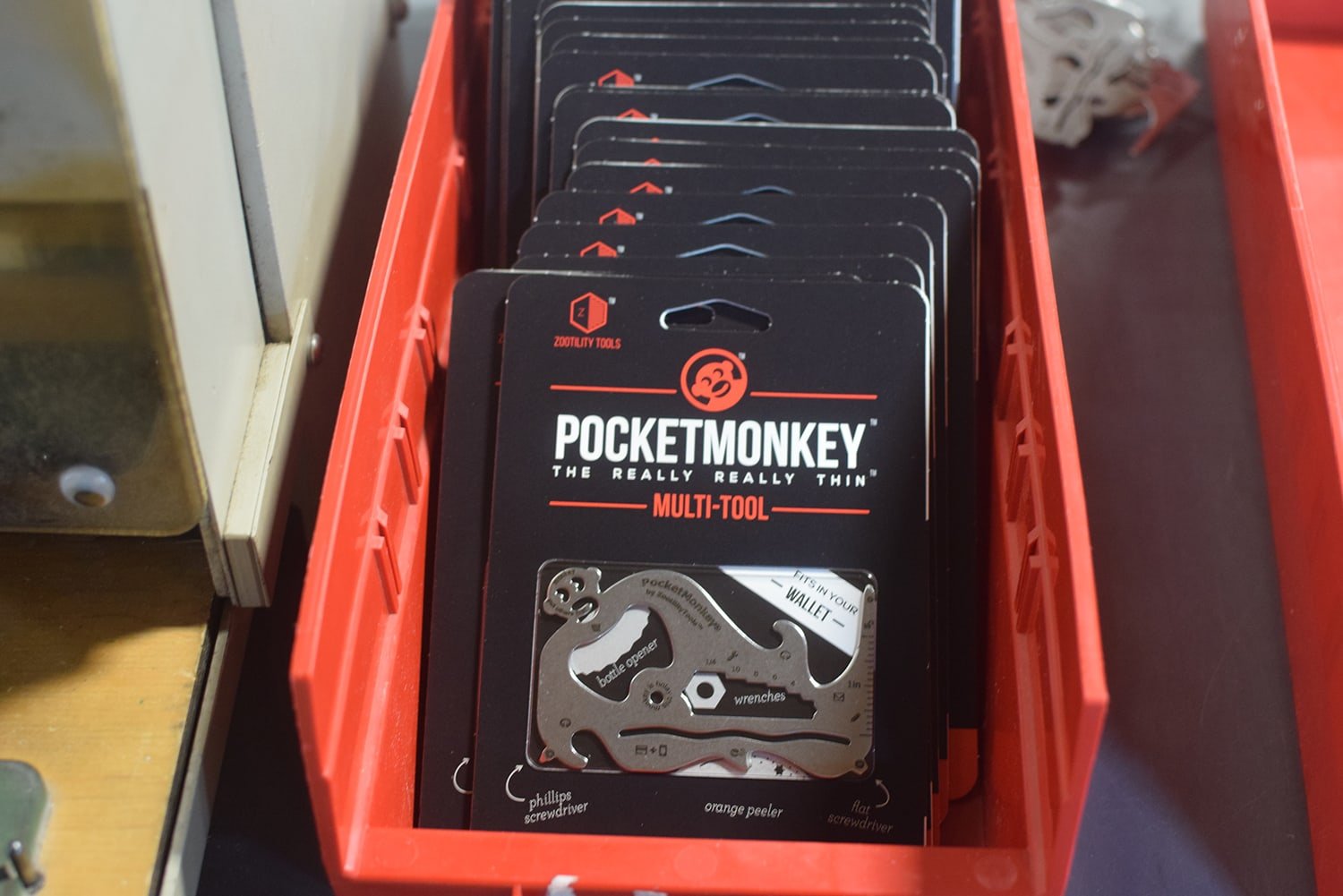
Photo Courtesy of: Zootility
We have definitely made an effort to re-invest in our local community and the people who live here by manufacturing our products right here in Maine. Offshoring has resulted in a loss of knowledge and a real disconnect from the products that we use every day. Products that were previously considered to be of a high quality are now losing their shine, as less care is put into them and there is less appreciation and understanding of how these things are made. By investing in our local community and ourselves by learning something new every day, we believe we are doing our part to bring this knowledge back and instill more of a sense of pride in our employees and the products that they help to create.
You are originally from the Boston area. What made you decide to move the company and shop to Maine?
Nate: I had originally looked at a few places in the Boston-area, but it just didn’t make sense financially. There is a lot of great technology being developed in Boston by the innovative companies in the area, but to set up a manufacturing business in Boston was cost-prohibitive. By moving our shop to Portland, Maine we were able to save a lot on the space, which helped us in the early stages of the business.
The other thing was the lifestyle change. Portland has a great downtown area with lots of small businesses. There are restaurants, breweries, coffee shops, and plenty of locally-owned shops. It is also easy to get around, either by car or bike, and there is very little traffic throughout the city. I also wanted to locate our shop so that it felt like part of a community. We were able to find a great spot in downtown Portland surrounded by other manufacturers and small businesses. It makes for a great place to come to work every day.
What does the future hold for Zootility?
Nate: Right now, we do as much business in Q4 around the holidays as we do the entire rest of the year, so we have been exploring ways to make better use of the machines during the slower months. As we have completed installing and setting up our new machines, we have begun to do contract manufacturing to fill out the rest of the year. We have the unique ability to create small parts with extremely tight tolerances, and we are willing to do small volume, small batch manufacturing that other shops may turn down. We have been getting business from companies in Boston, who are looking for the “just in time” manufacturing which we can provide. The extra revenue from these projects will allow us to take off the Kickstarter training wheels and expand the business faster on our own.

Photo Courtesy of: Zootility
From a product standpoint, we are looking to launch more “serious” tools for the outdoor enthusiast. Right now we are in the process of launching our new RNGR brand, which will be a line of minimalist every day carry products, without the whimsical nature of the Zootility Tools products. We also are on the verge of shipping our new TÜLRY brand, which is a series of jewelry infused with every day carry tools.
Chris, you create a lot of very thin products. How does that affect your workholding when working in materials that thin?
Chris: Our workholding has been built entirely custom for our CNC machine, due to the nature of the products. For example, we are currently working on our WildCard knives, which are only .040″ thick. There really isn’t much on the workholding market that will work well for something that small, so our team actually machined our own metal strips on the CNC, held the knives down with small bolts, added some rubber bumpers so we do not have metal on metal contact, and it has worked really well for us so far. We also created custom workholding for the new TÜLRY line tools, which are also extremely thin.
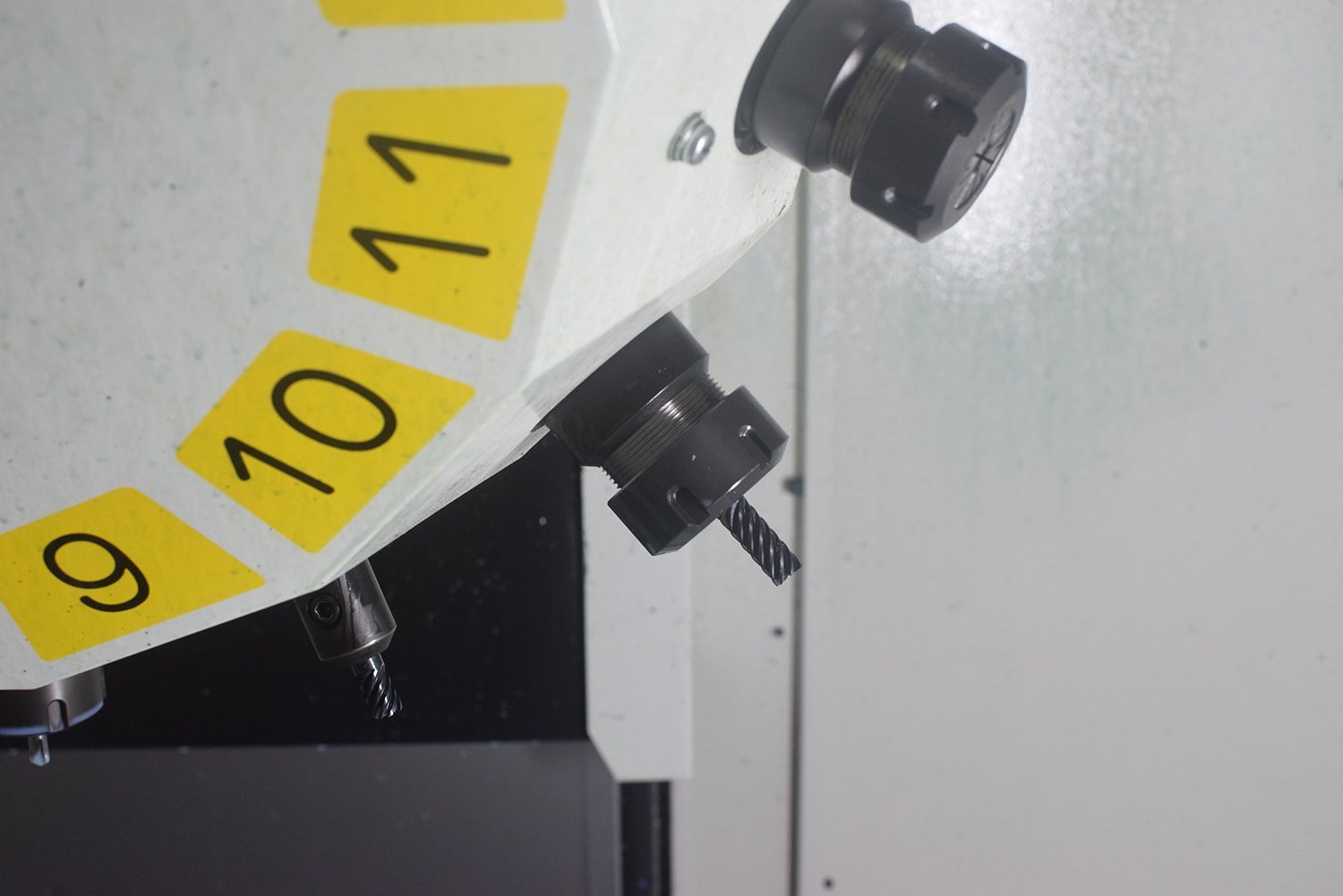
Photo Courtesy of: Zootility
The biggest challenge with our custom workholding is the additional time it adds to each job. Right now, we can run batches of 72 knives per cycle, with a cycle time of 28 minutes. Then, we need 20-25 minutes to unscrew each of the bolts, remove the finished knives, and then insert the new knives and screw the bolts back in. However, it is the only way we can machine products this thin with our tight tolerances, and we can still finish around 600 knives per day.
You mentioned your tight tolerances. What are some of the tolerances you are working in every day?
Chris: Right now, all of our tolerances are in the thousandths. For example, the WildCard knives have a tolerance of just +/- .003″, and the screwdriver tools on the TÜLRY necklace, while one of our highest tolerances, stick to just +/- .005″. The tightest tolerance we are currently working in is on the hex wrench tools for the TÜLRY necklace. The hex wrench tools have to be spot on, or they will be too loose when they go to be used on a hex nut. Right now, we like to keep those tools to a tolerance of +/- .001″.
How has your experience been using Harvey and Helical tools on these projects?
Chris: The Harvey and Helical tools have been great for us. When I started, we had another brand of end mills in stock, and they simply weren’t cutting it (no pun intended) in the types of heat-treated stainless steel which we were working in. We switched over to the Helical 7 flute end mills for roughing and finishing of the knives. Each knife has a very small shelf on it, which allows it to be a removable piece of the WildCard tool. We use a 3/8″ 7 flute Helical end mill with a .020″ corner radius for this cut, with a 3/8″ 7 flute square end mill for finishing. One interesting part of this job is that it requires a very low ADOC because the tools are already so thin, that the roughing we do removes only a very small amount of material.
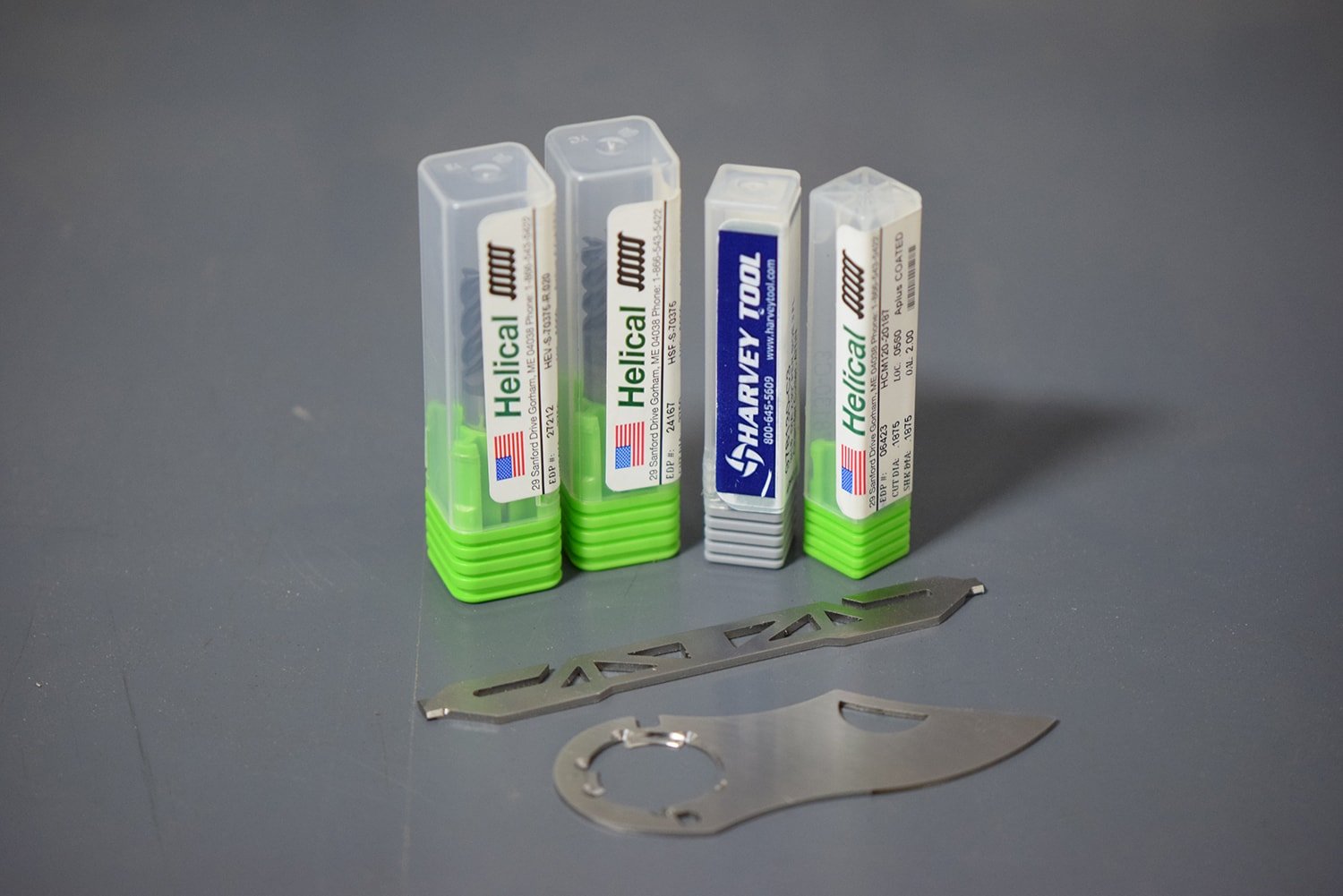
Photo Courtesy of: Zootility
We also use both Harvey and Helical chamfer mills to create all of the box cutter and hex wrench TÜLRY tools. With the hex wrenches, we have found that the 60° tipped off chamfer mill has been great for creating those intricate cuts. With the box cutters, we needed an edge sharp enough to cut through tape and cardboard, but not sharp enough to cut through the skin. We have found that the 2 flute 120° chamfer mills work best for those cuts.
What is the biggest challenge you face at the CNC machine?
Chris: Right now, we laser cut all of the outlines for the knives from a thin sheet of steel. Then the knives come to us right off the laser cutter for machining. The laser cutting does create a rough finish on some of the knives, which can make them hard to lock down when machining. This can result in some movement, which can lead to the occasional scrapped part. The laser cutter can also leave burrs at the start and stop points, or leave a scorch mark or some slag on the knives, which can make them tougher to machine.
The Zootility shop uses a lot of different equipment. How has the CNC machine in particular impacted the shop as a whole?
Chris: Our CNC machine comes in handy for a lot of different things around the shop. As I previously mentioned, we used it to create our own custom workholding, which has worked very well for us. We also used the CNC machine to create all of our forming dies, which are used to create all of our tools from scratch. As we move into more contract manufacturing for other companies, these machines will get even more use when we are working on the small batch jobs we will (hopefully) be getting.
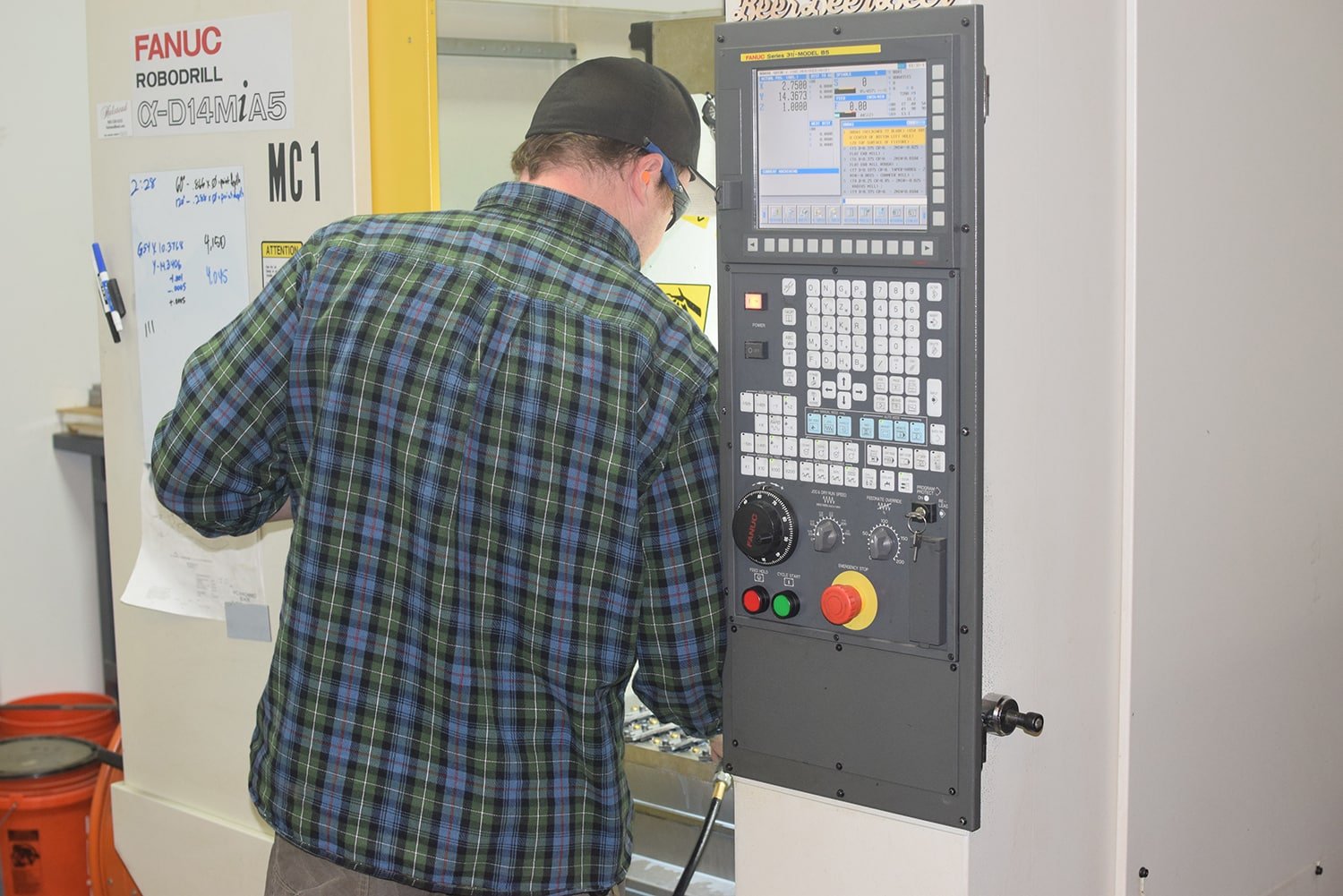
Photo Courtesy of: Zootility
Would you like to be considered for a future “Featured Customer” blog? Click here to submit your information.
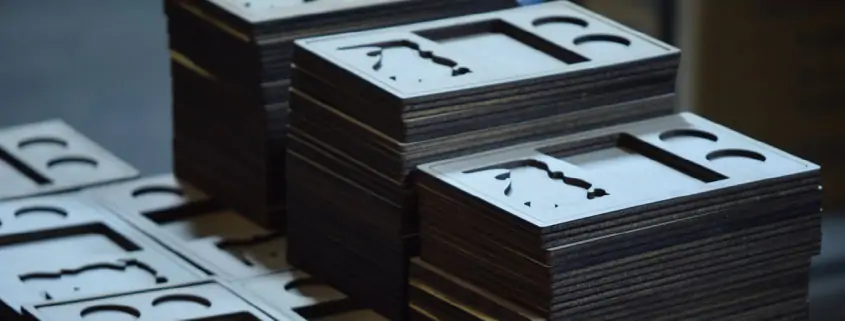

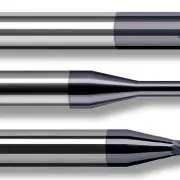


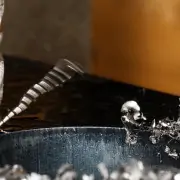
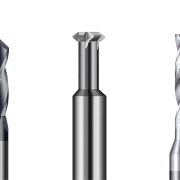
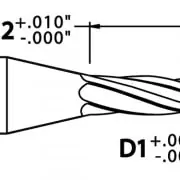
Leave a Reply
Want to join the discussion?Feel free to contribute!